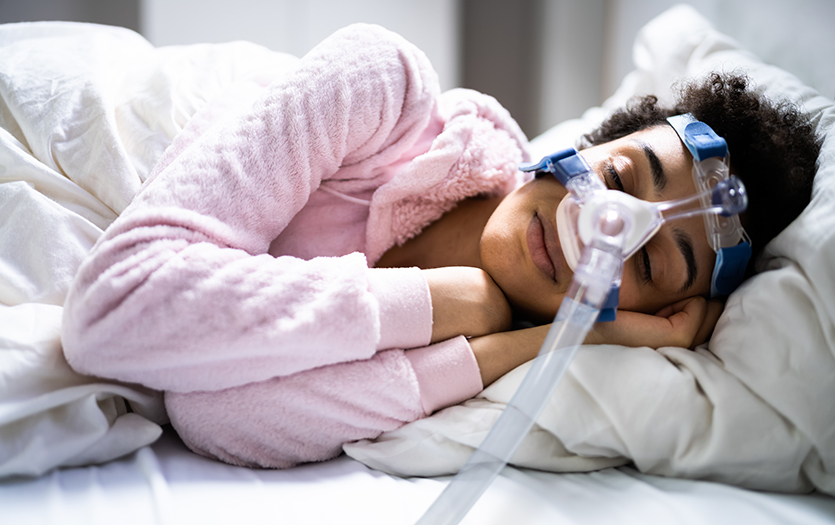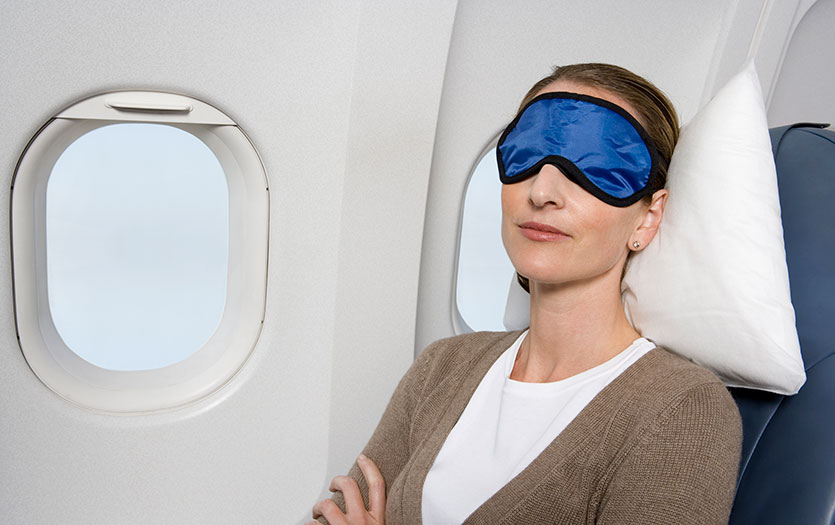
This post was written by Lauren Boles, NP, PPG – Parkview Sleep Medicine.
Thousands of Americans struggle with a sleep disorder, and many use a continuous positive airway pressure (CPAP) machine to get relief. But what if the technology isn’t working? In this post, we unpack the signs it isn’t effective and troubleshoot common explanations.
Symptoms associated with under-treated sleep apnea
If an individual’s obstructive sleep apnea (OSA) is not being addressed, they might experience:
- Snoring
- Dry mouth in the morning (a result of snoring)
- Witnessed gasping/choking/coughing/waking up
- Shortness of breath (apneic episodes)
- Daytime sleepiness
- Fatigue
- Trouble getting out of bed in the morning
- Feeling foggy/groggy upon awakening
- Urge to nap or tendency to easily doze off when sitting
- Waking up with headaches (could be a sign of low oxygen levels at night)
- Frequent nocturnal awakenings or bathroom trips through the night
- Tossing and turning
- Night sweats
- Difficulties with memory or concentration
If the person is noticing snoring while using the CPAP, they might require higher pressure.
What the machine can tell you
Patients with newer ResMed CPAP machine models, like the ResMed AirSense 10 or AirSense 11, are able to link their CPAP machine to an app on their smartphone called ResMed myAir™. The app is very user-friendly and provides a score out of 100 each morning.
Checking the app often helps the patient know if their machine is working properly to treat their sleep apnea. The app breaks the data down into four categories:
- Usage hours (up to 70 points)
- Mask seal (up to 20 points)
- Events per hour of abnormal breathing (up to 5 points)
- Mask on/off (up to 5 points)
To get all points for hours of usage, the CPAP machine must be used for 7 hours or more. (The machine can’t differentiate between sleep hours and usage hours, so it’s all usage hours.) Insurance wants patients to use their CPAP machines for at least 4 hours or more each night, for 70% of the nights or more to stay “compliant.” We would love patients to use their CPAP machines all night, every night, and also for naps. Side note - patients should also take their CPAP machines with them every time they travel, even if it is just for one night.
To get all points for mask seal, the mask leaks have to be less than 24 L/min of air escaping through either the actual mask cushion or the patient’s mouth (if it falls open). Keeping the mask cushion cleaned daily with either soap/water, or a CPAP wipe or baby wipe helps to keep a good mask seal. Updating the mask cushion periodically (once monthly for full face mask cushions or up to twice monthly for nasal mask cushions) is also recommended.
To get all points for the events per hour of abnormal breathing, this number must be less than 5 events/hour. If a patient’s events are consistently above 5, they should notify their sleep provider. Sometimes pressure adjustments, a different mask or another sleep study are needed.
To get all points for mask on/off, a patient should avoid taking their mask on and off throughout the night. They can take their mask off once or twice each night and not have any points deducted, but more than that, they will lose points.
Signs the CPAP machine is malfunctioning
- Noise! As machines age, they usually get noisy, with whining or wheezing noises with every inhale and exhale.
- The pressure may feel weaker than normal.
- Humidity issues. Machines will usually stop using their normal amounts of distilled water, and the air will feel colder without the added heat/humidity.
- An alert may show up on the CPAP machine’s screen stating, “Motor life exceeded, contact care provider.” This means that the blower motor has reached its life expectancy. Usually, the machines will still work for a short while, but the patient should contact their sleep provider as soon as possible to get a new machine ordered.
Troubleshooting your CPAP issues
If your CPAP machine is malfunctioning, there are options.
Patients are eligible for a new CPAP machine through insurance every five years. If a patient’s machine is malfunctioning and it is over five years old, their sleep provider may be able to simply order them a new CPAP machine through a durable medical equipment (DME) company. Sometimes, a new sleep study is first required if the patient has not completed a sleep study in over ten years, their sleep study records are not obtainable or if they have not yet completed a sleep study while on Medicare insurance.
If a patient’s CPAP machine is malfunctioning but it is not over five years old, the sleep provider can enter a “repair/replace” order with an explanation of the machine’s issue. This will be faxed to the patient’s DME company and the patient will be required to take their machine into their DME company for help. Often, the DME company will have to ship the machine away for the repair, but they will usually offer a loaner machine that can be rented monthly for the patient to use in the meantime. If the machine is beyond repair, then the machine may end up being replaced by the DME company.
An important piece of sleep hygiene
Please follow-up with your sleep provider at least once yearly, even if you’re doing great on CPAP therapy. It’s important to have your CPAP data evaluated and stay established with the office. If a patient goes three or more years without an appointment, they are considered a new patient again. It’s much more difficult to get a new patient appointment compared to a follow-up appointment. If a patient’s CPAP machine completely stops working, they may have a long wait for a new patient appointment for the new machine to be ordered if they do not stay established.



